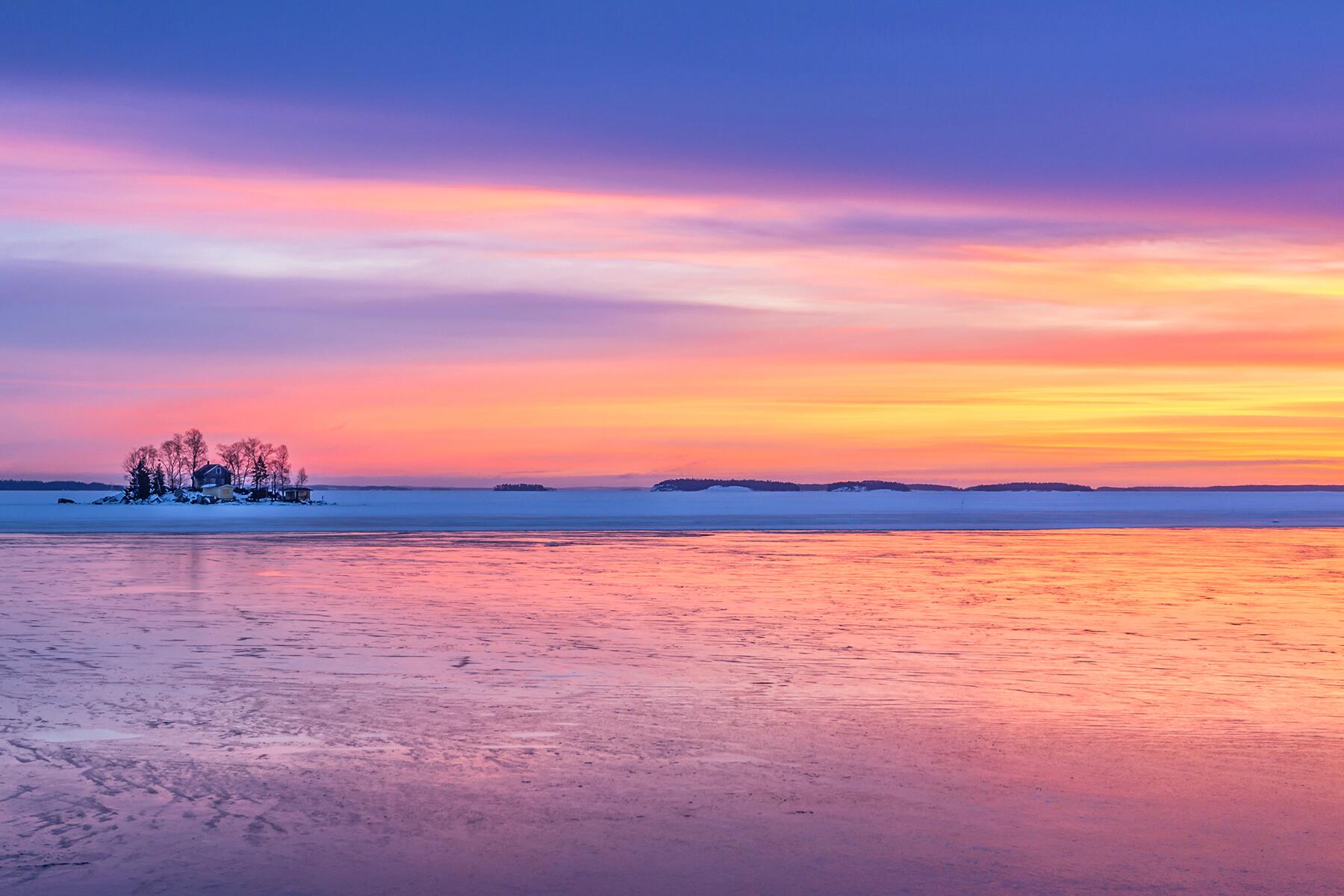
There's never a bad time to visit America’s amazing national parks, but with 58 of them in total, not to mention more than 100 national monuments, the decision of which one to visit can feel overwhelming. To make it easier, we've handpicked 10 bucket-list national parks—with new facilities, improved trails, and anniversary celebrations—that are must-visits in 2015. Start planning your next outdoor adventure today!
By Jayme Moye
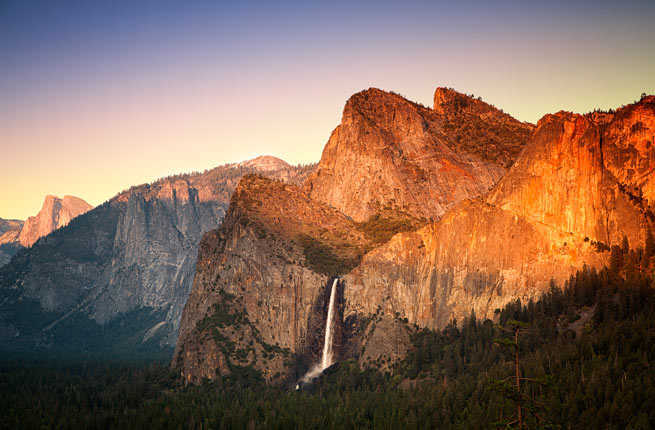
Yosemite National Park
California
Yosemite National Park became even more famous in January 2015, making headlines around the world when rock climbers Tommy Caldwell and Kevin Jorgeson completed the first free ascent of El Capitan’s Dawn Wall. The 3,000-foot smooth granite wall is widely considered the hardest rock climb on the planet. (Prime yourself on the history of Yosemite’s colorful rock climbing counter-culture by watching “Valley Uprising,” a 2014 documentary by Sender Films.) In March, the park began gearing up for its 125th anniversary, which takes place on October 1, 2015, by launching a free commemorative exhibit that will run through the end of the year. Catch “The Lure and Lore of Yosemite” at the Yosemite Sierra Visitors Bureau in Oakhurst, where guests can indulge in the inspired writings of Yosemite’s early advocates, like John Muir, and stroll among maps, artwork, and historical documents from the late 1800s.
Don’t Miss: The best close-up view of El Capitan can be found at El Capitan Meadow, which is located along Northside Drive.
PLAN YOUR TRIP: Visit Fodor’s Yosemite National Park Travel Guide

Grand Canyon National Park
Arizona
At the bottom of the Grand Canyon, some 5,200-feet deep, runs the mighty Colorado River, churning for 277 jaw-droppingly scenic miles and serving up what’s arguably the most classic whitewater rafting in the world. While many of the park’s five million annual visitors admire the river from above, few experience it up close. That’s because it’s a significant effort to hike or paddle to the bottom of the Grand Canyon—part of what makes standing at the bottom such a surreal experience. But all that may change due to a project called The Grand Canyon Escalade. At the time of writing, the Navajo Nation was about to weigh in on the plan, which would build a two million square foot construction project, including a tram to the canyon base, on the canyon’s east border. Whatever the outcome, the directive for nature lovers and environmentalists is clear: Get thee to the Grand Canyon—this mythical place, one of the Seven Natural Wonders of the World, may be about to change.
Don’t Miss: It’s a common misnomer that rafting the Grand Canyon’s 277 miles is out-of-reach for ordinary folk. Not true. The trip takes six to seven days, depending on the outfitter, and is open to anyone of reasonable health over the age of twelve, no paddling experience required. Western River Expeditions has been a well-respected outfitter for more than fifty years, providing an all-inclusive trip including camping accommodations and meals. May through September is the best time to explore.
PLAN YOUR TRIP: Visit Fodor’s Grand Canyon Travel Guide

Glacier National Park
Montana
If massive mountain peaks, pristine alpine lakes, and of course, glaciers, are your affinity, it’s hard to beat Glacier National Park. And this is one national park trip you can’t afford to put off any longer—only about twenty-five glaciers remain of the 150 that existed in 1850. And by about 2030, glacier regression models put that number at zero. Need more convincing? In 2015, Glacier National Park expects its one hundred millionth visitor, which might be you. In keeping with that theme, book a lake view balcony room at Many Glacier Hotel, which celebrates its one hundredth Anniversary on July 4. The hotel is simple and rustic but widely regarded as one of the most scenic national park lodges in the nation thanks to its location on the shores of stunning Swiftcurrent Lake.
Don’t Miss: Experience the true seclusion of Glacier National Park by exploring its waterways. Take a boat tour starting at Swiftcurrent Lake behind Many Glacier Hotel or rent a kayak, canoe, rowboat, or even a small motorboat.
PLAN YOUR TRIP: Visit Fodor’s Glacier National Park Travel Guide
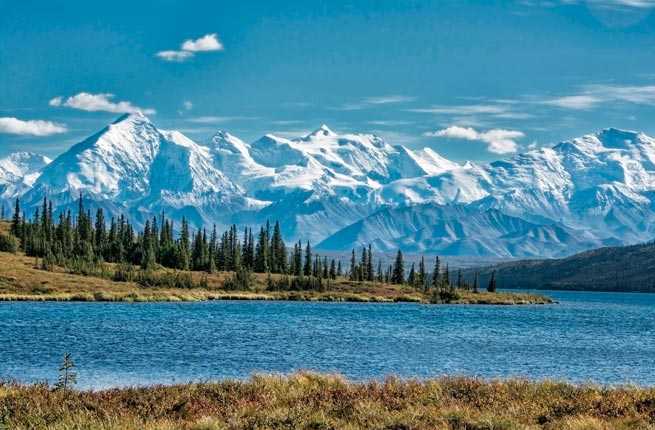
Denali National Park & Preserve
Alaska
Alaska’s most popular tourist attraction offers more than six million acres of some of the wildest land in America, including the tallest mountain on the continent: 20,320-foot Mount McKinley. For 2015, Denali Education Center is unveiling a new one-of-a-kind program called “Life in Denali,” designed to address the inevitable questions that arise about life in the far north. The program gives guests an insider’s glimpse into why people settle—and stay—in remote Alaska. Nightly at 5 p.m., local residents will share stories about dressing for severe cold, enduring winter darkness, interacting with wildlife, and other everyday adventures in Alaska (mid-May through September; $25 per person).
Don’t Miss: Alaska is huge and difficult to fit into just one trip, but thanks to a new offering by Northern Alaska Tour Company, guests visiting Denali can now easily access the Arctic Circle, some 400 miles away. The 5.5-hour Arctic Circle flying tour will depart from the Healy Airport at Denali en route to once-in-a-lifetime views of the Trans Alaska Pipeline, the remote Brooks Range, and the Dalton Highway (the most isolated road in the U.S.), as well as a stop in the historic mining community of Wiseman.
PLAN YOUR TRIP: Visit Fodor’s Denali National Park and Preserve Travel Guide
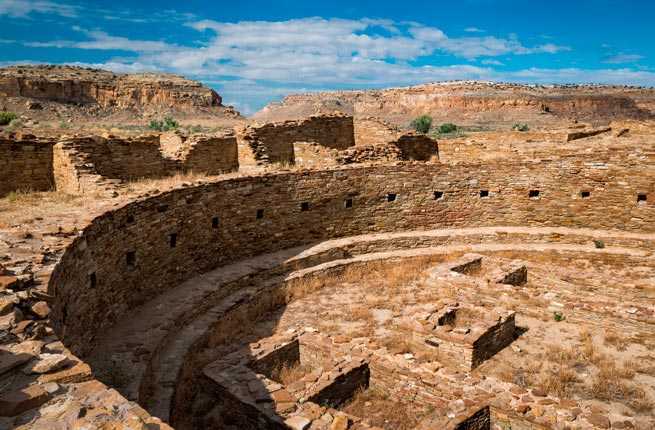
Chaco Culture National Historical Park
New Mexico
The Chaco Culture National Historic Park, a UNESCO World Heritage Site, encompasses the sacred ancestral homelands of the Hopi and Pueblo people and with more than 4,000 prehistoric archeological sites, contains the most extensive site of historic pueblos in the American Southwest. But that’s not all. In August 2013, Chaco Culture was recognized as an International Dark Sky Park for phenomenal stargazing, joining the ranks of only three other U.S. national parks. The remote park is located in the San Juan Basin in northwestern New Mexico, protected from the pollution created by cities and accessible only by dirt road. Word on the street is to get there sooner rather than later, at least for night sky viewing, because the park may soon have company in the form of fracking, according to the Albuquerque Journal.
Don’t Miss: The Chaco Night Sky Program presents astronomy programs, solar viewing, and stargazing by telescope from April to October. Pick up a schedule at the Visitor Center.
PLAN YOUR TRIP: Visit Fodor’s Northwestern New Mexico Travel Guide
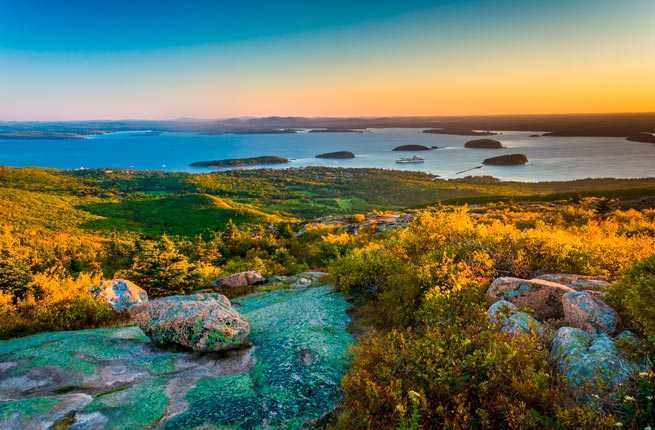
Acadia National Park
Maine
It’s been said that iconic Acadia National Park is 47,000 acres of superlatives: the only national park in Maine, the oldest national park east of the Mississippi, the home of Cadillac Mountain—the tallest peak on the Atlantic Coast, and the first national park in America to have an endowed trail system. This year marks the fifteenth anniversary of Acadia Trails Forever, established in 2000 by Friends of Acadia and Acadia National Park to repair the celebrated 130-mile hiking trail. Since then, the program has restored many miles of lost trails in the park that had fallen into disuse since the heyday of trail-building in the early twentieth century, including the hundred-year-old Homans Path, built in 1915 and featuring 400 spiraling granite stairs. 2015 is also the twentieth anniversary of Acadia's Artist-in-Residence Program, which provides writers, composers, and visual and performing artists the chance to practice their art in the beautiful park landscape.
Don’t Miss: The hiking in Acadia is some of the best in the eastern U.S., with the crown jewel being the 4.4-mile round trip trek to the top of the Cadillac Mountain on the North Ridge Trail.
PLAN YOUR TRIP: Visit Fodor’s Acadia National Park and Mount Desert Island Travel Guide

Rocky Mountain National Park
Colorado
Mountain majesty is the predominant theme at Rocky Mountain National Park, where seventy-two peaks stand taller than 12,000 feet, including a handful of “thirteeners” and 14,259-foot Longs Peak. In typical outdoorsy Colorado style, more than 300 miles of hiking trails crisscross the park’s spectacular landscape. On September 4, 2015, Rocky Mountain National Park will turn one hundred, and the park decided that should entail a yearlong Centennial Celebration, which commenced last September. Special activities—including speakers, exhibits, a seminar series, community events, and free ranger-led walks, talks, and evening programs—are ongoing. View the park’s master Centennial Celebration Calendar here. The festivities conclude with a Re-Dedication Ceremony at 11:00 a.m. on September 4, 2015, at Glacier Basin Campground, with family activities, speakers, and music.
Don’t Miss: Take a drive up Trail Ridge Road, which peaks at 12,183 feet, and experience life at high elevation. The air is thin, but the views of wildflower meadows, moraines, and glaciers, are well worth it. Keep an eye out for elk—they can typically be spotted from the car.
PLAN YOUR TRIP: Visit Fodor’s Rocky Mountain National Park Travel Guide

Mammoth Cave National Park
Kentucky
There’s no place quite like Mammoth Cave National Park, home of the longest cave system on Earth. So far, 400 miles of the subterranean passageway have been explored, and a portion of these otherworldly caverns and tunnels are open to the general public through ranger-led tours spanning 1.25-4 hours. In 2015, the park stepped up its efforts to protect the cave’s most famous residents—bats—by launching its first podcast “Signals of a Wildlife Disaster” in March. Thousands of the fascinating creatures (the only mammals that can fly) call Mammoth home. Unfortunately, their numbers have steadily dwindled over the past 150 years. The latest threat (and the topic of the podcast), White-Nose Syndrome, which does not affect humans, has been spreading across the eastern U.S. since 2006, killing millions of bats.
Don’t Miss: It’s one thing to take a walking tour in Mammoth Cave, with stairs and walkways built for tourists, but quite another to experience the cave as scientists and explorers do—by climbing, squeezing, and trekking through the caves’ untamed sections. Mammoth offers a six-hour “Wild Cave Tour” for the bravest (and most athletically inclined) guests.
PLAN YOUR TRIP: Visit Fodor’s Cave City Travel Guide
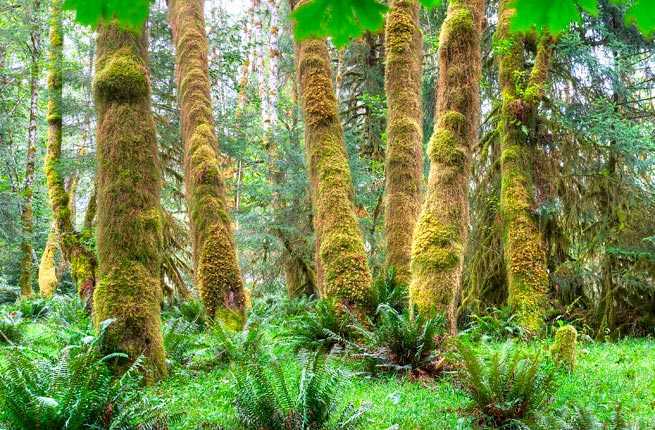
Olympic National Park
Washington
The magic of Olympic National Park is undeniable—nearly one million acres of raw, pristine wilderness ranging from the Pacific Coastline to the glacier-capped peaks of the Olympic Mountains, with old growth forests in between. The park is also an International Biosphere Reserve and a World Heritage Site, and 95% of the land is designated wilderness, meaning not even a road runs through it. The park garnered international acclaim in 2011, when it began the largest dam removal in history to allow the Elwha River to easily flow from the Olympic Mountains to the Strait of Juan de Fuca. Both the Elwha and Glines Canyon dams have since been torn down, and the Lake Mills and Lake Aldwell reservoirs drained. In 2015, Olympic National Park will open a new facility (eta: mid June) called The Glines Canyon Spillway Overlook. Guests can expect stellar views into the 200-foot deep canyon to watch the newly freed Elwha River flowing, as well as of the former lakebed of the Lake Mills Reservoir, where thousands of native plants are re-establishing themselves after one hundred years underwater.
Don’t Miss: Olympic National Park is home to the Hoh River Rain Forest, one of the last remaining examples of a temperate rainforest in the U.S. Located on the west side of the park, the Hoh River Rain Forest has an 88-site campground (open year-round) and trails for all ability levels, ranging from a .8-mile nature loop to the 17.3-mile Hoh River Trail.
PLAN YOUR TRIP: Visit Fodor’s Olympic National Park Travel Guide
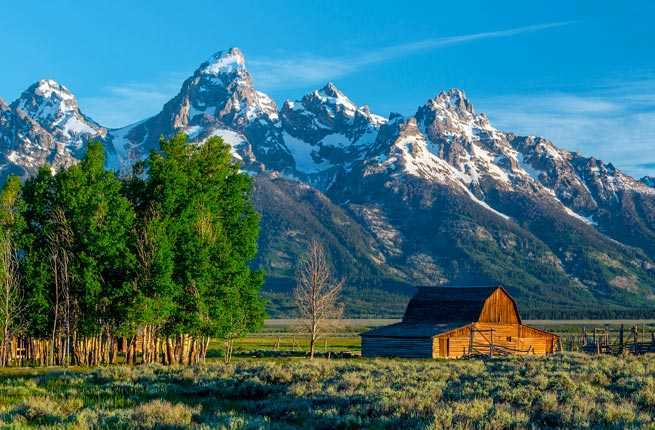
Grand Teton National Park
Wyoming
It may be only 10 miles from famed Yellowstone, but Grand Teton National Park is a visual masterpiece in its own right. Not only is it the home of the major peaks of the dramatic Teton Range, including its namesake, 13,775-foot Grand Teton, but also the West’s most defining wildlife. Think grizzly and black bears, elk, moose, bison, pronghorns, big horned sheep, wolves, coyotes, river otters, beavers, badgers, snowshoe hares, marmots, bald eagles, trumpeter swans, and trout, to name a few. The wildlife is so prevalent that photo safaris are among the most popular of the park’s tour offerings. After a moderate snowpack this winter, spring has come early to Grand Teton National Park, which is great news for summer 2015 visitors. Most of the major passes and divides will likely be passable without the aid of crampons and ice axes by early- to mid-July. This means wildflowers may also be slightly ahead of schedule.
Don’t Miss: Grand Teton has hundreds of scenic trails to trek, but spotting wildlife while floating the mellow Snake River is truly a remarkable experience. Heather Ewing, of Barker-Ewing Whitewater, is the local expert and runs daily float trips throughout the season (late May to mid September).
PLAN YOUR TRIP: Visit Fodor’s Grand Teton National Park Guide


